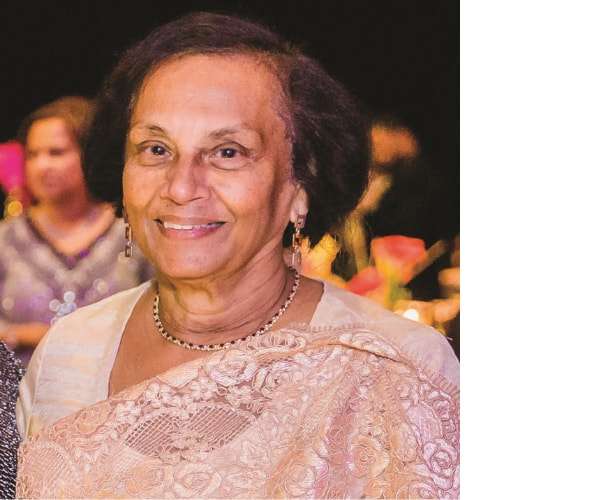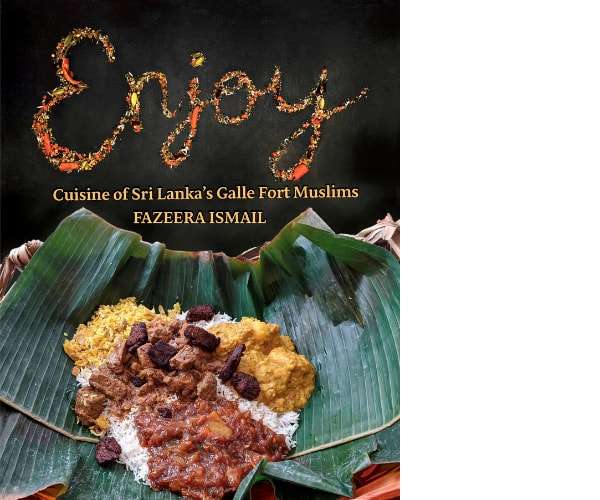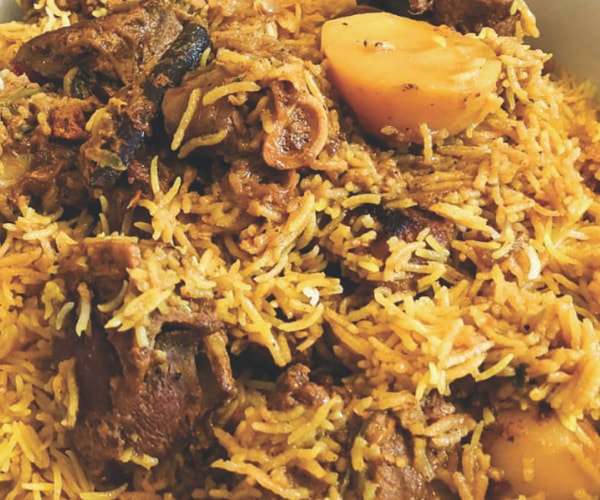
Dec 17 2020.
views 2434To most people, a menu is a list of dishes one orders from, which could always change. To Galle Fort Muslims a menu refers to an exact, immaculate combination of dishes that defy alteration. If any single characteristic makes their food uncommon, exclusive, unique even, if it’s possible to speak of a ramparted Galle Fort Muslim cuisine, these combinations, the handiwork of generations of women in the kitchen, play the starring role.

For this reason, Fazeera Ismail, now domiciled in Virginia, USA set forward to put her recipes together for her children and grandchildren, and now, as she says "all of you can have your taste buds entranced too by this meticulously and unique cuisine, passed on by generations of our forefathers.”
The 150-plus-page cookbook organizes the recipes by menus for easy reference. Take kiddu shoru, served on a platter of woven coconut fronds, meant to be eaten communally. Rice forms the base, covers the fronds, leaving just enough space at the edges for the blades to peek through. White against dark green looks lovely to start with. Add the deep brown of beef curry, the golden red of chutneyed mango, the many shades of beige in thoottal (a combine within a combine – of breadfruit, sweet potato, taro or kiri ala in Sinhala and pumpkin), the dull yellow of jackfruit with coconut, the straightforward black of fried beef…and you are salivating merely by reading this!
Served less spectacularly is the breadfruit and beef curry, always accompanied by cucumber sambol, freshly grated coconut and pappadum. Breadfruit, of course, arrived from Southeast Asia; brought over in colonial times, it spread throughout the south.

There’s a tree inside the Fort with a plaque claiming it the first to be planted in the country. Some Gallic genius plucked the fruit, mingled it with beef and created a meal blending the sweet tenderness of the one and the bite of the other, taking care to add some crunch, extra texture, with the pappadum. If too spicy, the cucumber and coconut cool things down. The uniqueness of this menu hails both from the extraordinarily thoughtful and tasteful combination of supplements, together with the fact that breadfruit and beef curry is the only Sri Lankan dish that mixes meat and vegetables (or fruit). You won’t find anything remotely similar anywhere else on the island.
Following the same principle, Galle Fort biriyani features potatoes. When composed properly – i.e. Fazeera Ismail’s way – the potato should taste of mutton. Galle Fort Muslims took an Indian invention, the Hyderabadi ‘dum,’ and perfected it.
Galle was, for centuries, Sri Lanka’s leading port. This made its denizens open to outside influence, like breadfruit.
Galle Fort Muslim women were some of the first in the country to do outrageous things: cut their hair short, carry handbags. The more adventurous would get into buggy-carts– go to town, push aside the curtain, buy fresh fish, produce, at the market. Undoubtedly, such journeys introduced our cuisine to many inciting possibilities, including the Maldivian condiment rihaakuru, which complements breadfruit and beef curry superbly.

Succinctly put by Qadri Ismail, Fazeera’s eldest son, “Now that we live thousands of miles apart, Umma usually cooks this untitled menu whenever I visit: thora (kingfish) fried fish curry, served with green gram curry, pan-fried potatoes, sautéed shredded coconut, cucumber sambol, and pappadum. Once again, there’s no other Sri Lankan cuisine that curries fish after frying it; or, for that matter, green gram after roasting it. Check out the recipe. Feast. Or, as Umma would say: enjoy!".
https://www.signupgenius.com/go/20f0949aba92aa02-enjoy is the link for pre-orders.
Fazeera Ismail is an educator and a social worker with a passion for cooking.
0 Comments